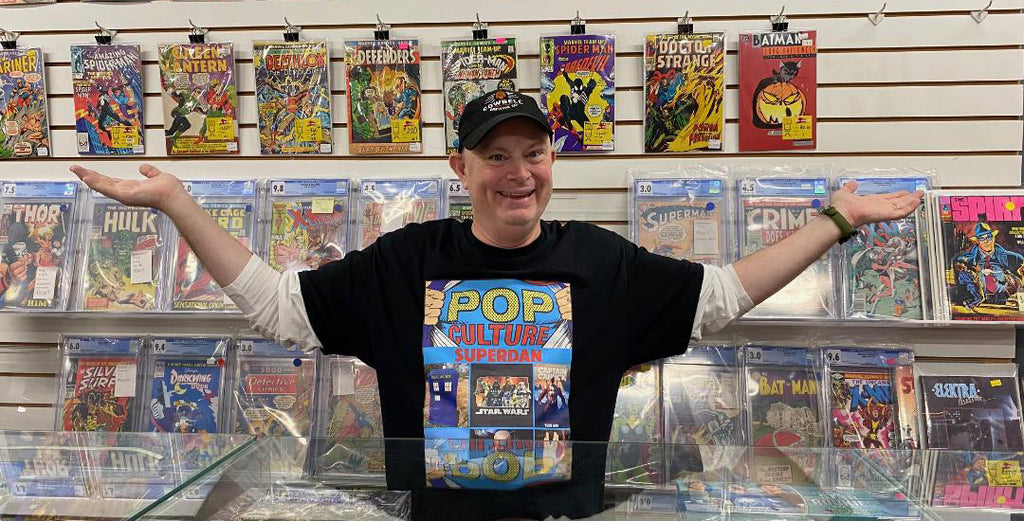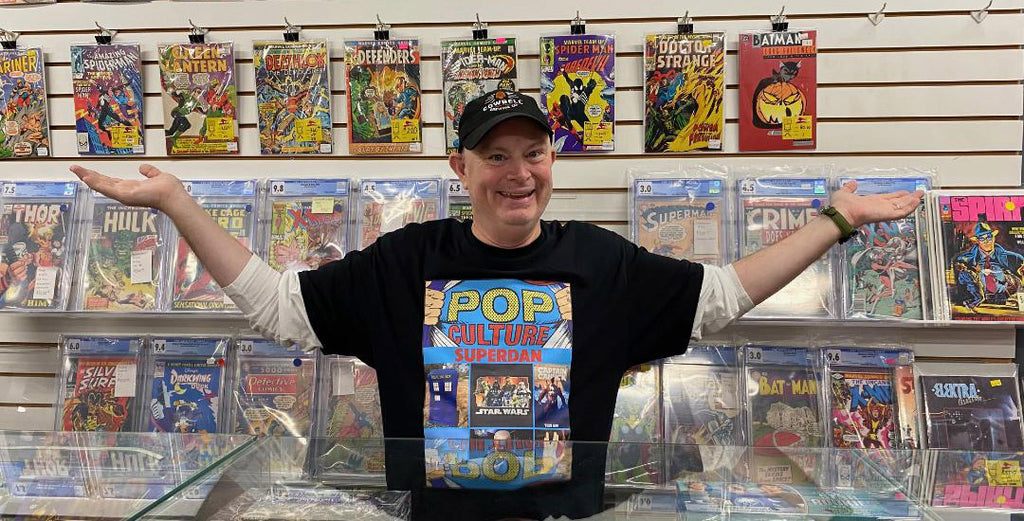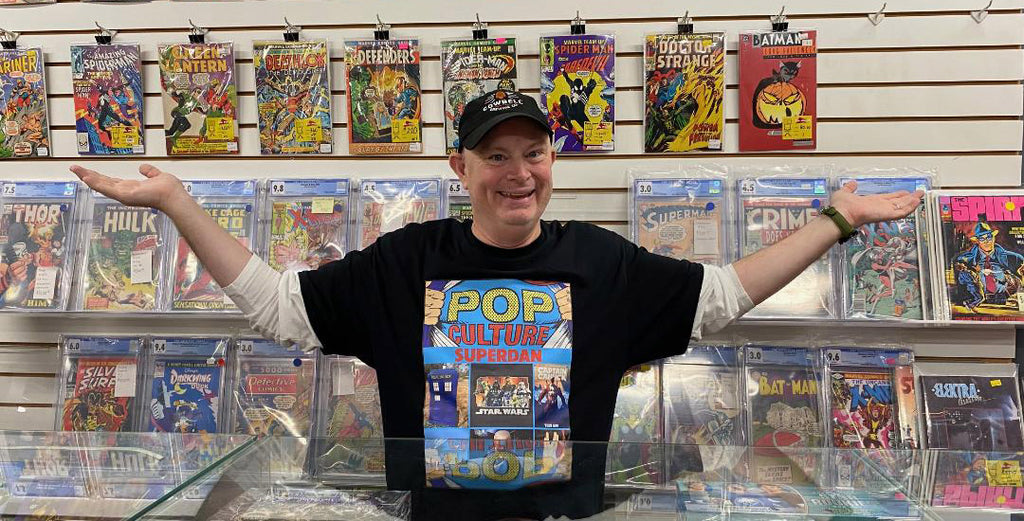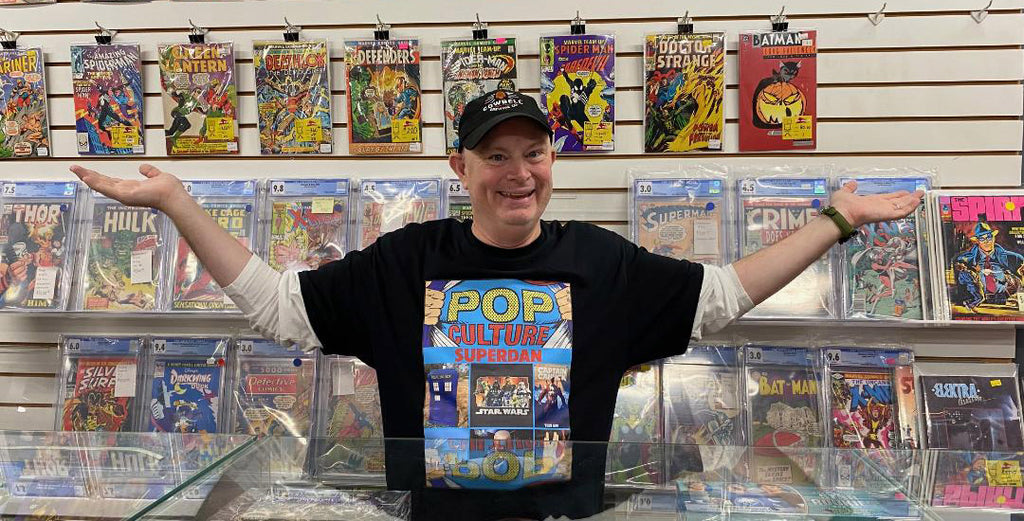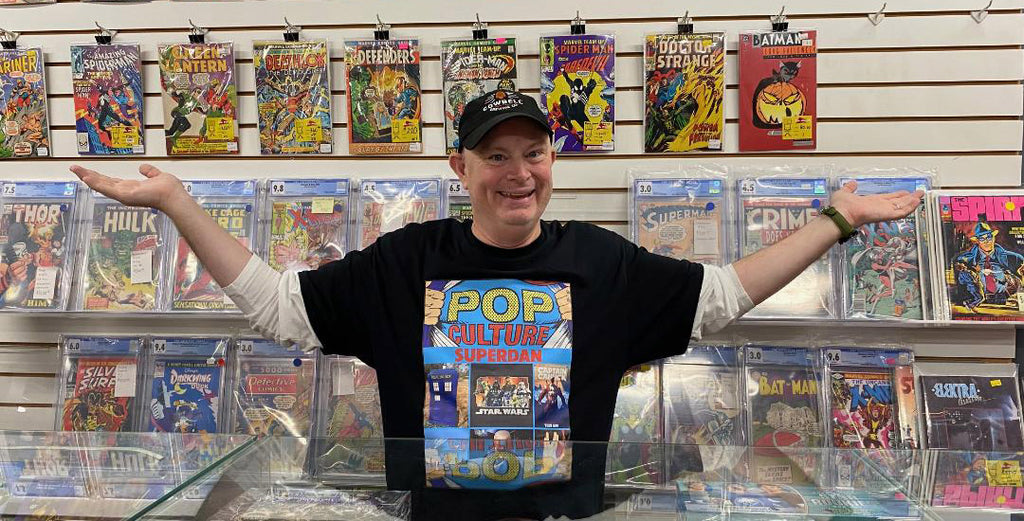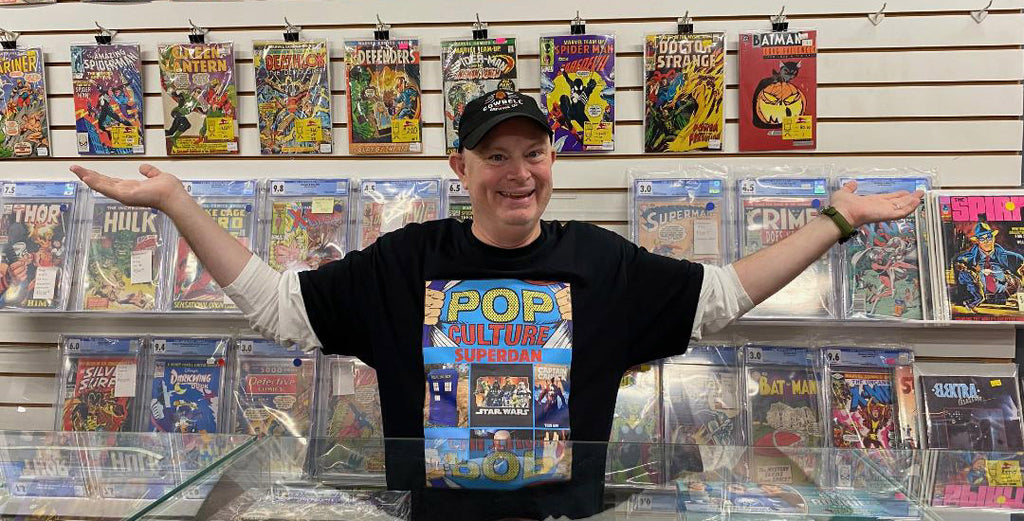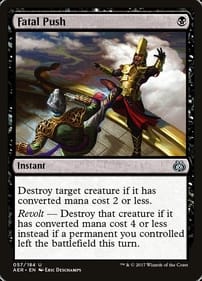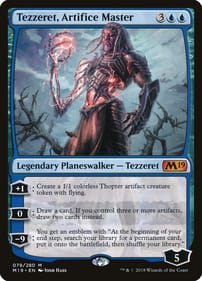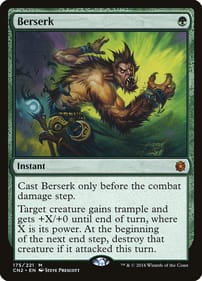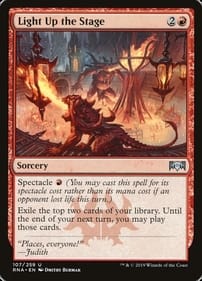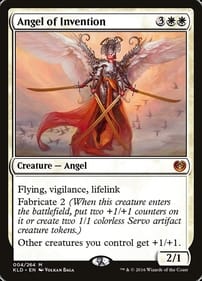Dan Brown's Graphic-novel Gift Guide
By Dan BrownThe holidays are looming, and you’ve been racking your brains for ideas of what gifts to get your family and friends, but coming up short.Well, you’ve come to the right place.We are now at the point where there is a graphic novel for everyone on your list, so please consider the following suggestions as you do your Christmas shopping.For your husband/boyfriend: Any Tintin adventure by HergeFor your wife/girlfriend: Jillian Tamaki’s Super Mutant Magic AcademyFor your dad: Giant by MikaelFor your mom: Any collection of Peanuts comic strips by Charles SchulzFor your brother: Essex County by Jeff LemireFor your sister: Jonathan Dyck’s ShelterbeltsFor your young son: Any Geronimo Stilton graphic novel by Elisabetta DamiFor your young daughter: The Bad Guys Book 1 by Aaron BlabeyFor your best friend: Petals by Gustavo BorgesFor the Marvel fan in your life: Origins of Marvel Comics (the 2024 Deluxe Edition)For the DC fan: Irredeemable by Mark Waid, Peter Krause and Diego BarretoFor the person in your life who loves superhero movies: Robot Dreams by Sara VaronFor the person who hates superhero movies: Ghost World by Daniel ClowesFor the music fan in your life: Leonard Cohen: On a Wire by Philippe Girard For the history buff in your life: Fax From Sarajevo by Joe KubertFor the hockey fan in your life: Essex County by Jeff LemireFor the journalist in your life: Ten Days in a Mad-House: A Graphic Adaptation by Brad RiccaFor the photographer in your life: Weegee from Wauter Mannaert and Max de Radigues For the comics historian in your life: Brian Doherty’s Dirty Pictures (it’s prose)For the lover of newspaper cartoons: Joe Ollmann’s Fictional FatherFor the fan of CanCon: Are You Willing to Die for the Cause? by Chris Oliveros For the grad student in your life: Any of the Wendy titles from Walter ScottFor the theatre lover: Kill Shakespeare by Conor McCreery, Anthony Del Col and Andy Belanger For the lover of literature: Slaughterhouse-Five: The Graphic Novel adapted by Ryan North and Albert MonteysFor the fan of the 1970s: Mimi Pond’s Over EasyFor the fan of the 1980s: Duran Duran, Imelda Marcos and Me by Lorina MapaFor the fan of AI: The Wild Robot by Peter BrownFor the deep thinker in your life: Leslie Stein’s I Know You RiderFor the Muppet fan in your life: A Tale of Sand from Jim Henson and Ramon PerezFor the comics newbie: Either The Dark Knight Returns (Frank Miller) Watchmen (Alan Moore and Dave Gibbons) or The Complete Maus (Art Spiegelman)For just about everyone: Oh, the Places You’ll Go! by Dr. SeussIf you have any of your own gift suggestions, I’d love to hear them in the comment box below! Alternatively, what titles are you asking Santa Claus to leave under your tree? Dan Brown has covered pop culture for more than 32 years as a journalist and also moderates L.A. Mood’s monthly graphic-novel group.
Is There Product Placement in Comics?
By Dan BrownMaybe it’s because I’m a naive fool, but I don’t ever remember seeing an instance of flagrant product placement in a comic book.I’m talking about the classic kind of product placement, the same type you see in movies or on TV where products are written into the plot of the show in return for brand exposure.(I’ll get to advertising partnerships in comics in a minute. They are a different animal.)For example, in an old episode of Big Bang Theory Raj gets a new iPhone. We know it’s an iPhone because after he and Howard unwrap the device, Raj has a conversation with Siri, Apple’s digital assistant. Not very subtle.Product placement like this would in theory be easy to do in comics. The reference could be written into a comic’s script and then the brand’s product would be drawn by the penciller.We all know Wolverine – being Canadian – loves beer, right? So in a scene in which the deadly mutant walks into a bar, he could order a Budweiser or other brand, and the artist could reproduce the label on the bottle or can in Logan’s hand. Easy-peasy, providing you can get the creative team on board with the idea.As straightforward as the process would be, it doesn’t seem to happen much. Maybe I’ve got feeble eyes, but I don’t recall much along those lines taking place in Marvel or DC Comics. There are opportunities aplenty, it’s true.Batman’s alter ego, Bruce Wayne, might prefer a certain make of sports car. Ben Grimm could make his preferences known for a specific type of cigar. Photographers love to talk about the equipment they favour, so why would Peter Parker be any different?The argument in favour of product placement in comics might go something like this: “We live in a world of brands, so superheroes having brand preferences would make them and their milieu seem more realistic. If advertisers want the exposure, publishers could use the extra revenue.”I’m talking solely about comics here. I know there’s plenty of product placement in motion pictures that feature the same superheroes. That’s a whole other column.Nor am I talking about the advertising partnerships comic publishers occasionally embark on, which are embarrassing because they’re so blatant.For example, Marvel characters such as the Hulk and Spidey were loaned out to Hostess in the 1970s to go on adventures in which the villains were all defeated or distracted the same way: By being fed Twinkies. These appeared as clearly marked ads, not part of a comic's storyline.Likewise, about a decade ago, motorcycle maker Harley Davidson signed a deal with Marvel to feature their fine wares in a series of one-shot issues. This led to odd situations in which the Avengers, instead of using the full range of their powers, including that of flight, would ride Hogs to do battle with evildoers.I did once read a Hawkeye storyline set in Madripoor in which a specific brand of credit card was name-dropped, but I can’t recall having seen anything like it since. And I can't say for sure it was the result of a deal.Perhaps the reason for the dearth of product placement in comics is publishers might have to share the fee with creators. Or maybe comic creators who consider themselves "artists" feel they’re above crass product placement.Or maybe it goes back to the traditional perception of comics being stuff for children, and therefore product placement being viewed as unfairly taking advantage of kids. Of course, both you and I know the average comic reader today is in their 40s or 50s so that argument no longer holds water.Dan Brown has covered pop culture for more than 32 years as a journalist and also moderates L.A. Mood’s monthly graphic-novel group.
Alien: Romulus Comic Short, but Intriguing
How the Alien: Romulus comic fills in Alien franchise story gaps and more reasons to read the comic explained in columnist's Dan Brown's comic book review.
Read The StoryRecommended Remembrance Day Reading
By Dan BrownIf you ask me, Remembrance Day should be a statutory holiday – I believe this country ought to grind to a halt out of respect for those who gave their lives so the rest of us could live in peace.And in no way do I think reading a comic or graphic novel can come anywhere close to recreating the brutality of combat. So I mean no disrespect by offering these ideas for Remembrance Day reading. Please consider these suggestions a starting point, and nothing more.Two Generals: Created by Southwestern Ontario’s own Scott Chantler, this moving book gives a grunt’s-eye-view of the D-Day landings. It’s based on Chantler’s own family history and his crisp lines don’t diminish the horrors of war. Jack Kirby: The Epic Life of the King of Comics: Not only did Jack Kirby draw many war comics, but he was also an actual U.S. soldier who landed at Normandy (in a subsequent wave). I recommend Tom Scioli’s biography because it helped me visualize Kirby’s contribution to the war effort. All Quiet on the Western Front: Wayne Vansant’s graphic adaptation of the classic Erich Maria Remarque novel pulls no punches with its detailed account of trench warfare and forays into No Man’s Land as told from the German side. Vansant is himself a veteran of the Vietnam War.The Canadian Whites: These were the wartime comics that flourished in Canada during the Second World War due to restrictions the government put on imports. Hard to believe, but our dominion had a thriving homegrown comic industry in those years. I would suggest you start with Nelvana of the Northern Lights, a collection about a female goddess who fought Nazis and also beat Wonder Woman to market.Berlin: This expansive volume by Jason Lutes depicts what was going on in the German city between the wars. The cast combines historical figures like Hitler with fictional characters and was years in the making. It opened my eyes.They Called Us Enemy: Inspired by the true story of Star Trek actor George Takei’s family, this tale of the homefront describes how Japanese Americans were sent to internment camps during the Second World War. This, after their possessions were confiscated and their businesses liquidated. There are echoes of this experience in the short comic Junban by Toronto creator Jillian Tamaki. It first appeared in the New Yorker and describes her grandfather’s parallel experience in British Columbia.Sgt. Fury and His Howling Commandos: Long before he was an agent of SHIELD, Fury – the comic one, not the one played by Samuel L. Jackson – was fighting Nazis in the pages of Marvel Comics. Any introductory collection will do, and yes, I know these comics were meant more as entertainment for boys than a serious record of how World War Two unfolded. Captain America’s earliest adventures are likewise worth a read – Cap was punching Hitler in the face before the U.S. had even been drawn into the war.Sgt. Rock: A DC anthology like Archives Volume One will give you the idea. The highlight here is Joe Kubert’s gorgeous art, which was also featured in another World War Two title from DC, the Unknown Soldier.Please consider these recommendations in the spirit they're offered. Every one of us has to begin learning about war somewhere, and for me it was in the pages of comics like these.Dan Brown has covered pop culture for more than 32 years as a journalist and also moderates L.A. Mood’s monthly graphic-novel group.
Scary Halloween Graphic Novels
By Dan BrownIn time for Halloween, here’s a rundown of graphic novels that range from unsettling to creepy to scary to horrifying. Read them at your peril, boys and girls!Vision: The Complete Collection: Imagine you live in suburbia and your new neighbours turn out to be emotionless androids. Literally. This Tom King-written story ends with the Vision taking on pretty much the entire Marvel universe.Monsters Volume 1 and 2: These omnibuses, dubbed “monsterbuses,” collect classic tales by Jack Kirby from the 1950s and 1960s, when evil creatures came with names like Fin Fang Foom. Find out what the world was like before superheroes! Before Marvel was even Marvel!The Simon and Kirby Library: Horror!: See some utterly creep characters the King came up with before he switched to inventing the Marvel universe pretty much on his own. In addition to EC’s many gruesome titles, this is the kind of comic that got denounced by U.S. politicians for causing juvenile delinquency!Any EC collection: From the publisher that brought you the Crypt Keeper! It doesn’t matter which EC horror anthology you read (they have titles like Tales From the Crypt and Crypt of Terror), they are all great examples of EC’s thoughtful suspense and horror!Monsters: Originally envisioned as a story about the Hulk, this thick tome from Conan the Barbarian artist Barry Windsor Smith is as gorgeous as it is horrifying! A military experiment goes wrong and unsuspecting civilians pay the price! Nicely marries horror with a touch of magic realism.Something is Killing the Children Book One: You can file this series under the heading of “the title is the premise.” Something evil has been leaving a trail of lifeless tots in its wake in the sleepy small town of Archer’s Peak. Will a heroine rise to stop the slaughter of innocents? Written by James Tynion IV.Wild’s End: Your basic alien invasion story set between the wars. The twist: The characters who populate the British countryside are anthropomorphized animals. The alien invaders look kind of like Victorian-era street lamps and remind me a bit of Triffids. This ain’t no Watership Down!H.P. Lovecraft’s At the Mountains of Madness Volumes 1 and 2: This manga adaptation of Lovecraft’s story about a doomed Antarctic expedition is made even more unworldly by the fact it’s a manga. Japanese creator Gou Tanabe takes his time to recount this encounter between humankind and the previous alien inhabitants of this planet.The Nobody: This Jeff Lemire joint, which made nary a splash when it came out in 2009, asks the question, What if the Invisible Man came to Essex County? Yes, I know Lemire never specifically says the story takes place in Southwestern Ontario, but it’s easy to imagine it does.Snotgirl Volume One: Green Hair Don’t Care: Written by Londoner Bryan Lee O’Malley (yes, he does stuff other than Scott Pilgrim!) this is a psychological drama featuring an influencer named Lottie Person. The fun comes from trying to guess how much of her adventures are really happening and how much of the action is in Lottie’s head. Vampirella Archives Volume One: My favourite version of Vampirella is the one featured in these stories from 1970s Warren Publishing magazines that were drawn by Jose Gonzalez. Giving the character a science-fiction twist – in this continuity, vampires are from the planet Drakulon – infused her stories with that X factor I was looking for as a kid.Ducks: Two Years in the Oil Sands: What does Kate Beaton’s account of her time in the oil patch have to do with Halloween? If you’ve ever wondered how an entirely male society would work, Ducks explores that theme in horrifying detail. Ducks is all the scarier for the fact it really happened. The old standbys: There’s also the Walking Dead for zombie fans, 30 Days of Night for vampire enthusiasts, and Hellboy books like Conqueror Worm for fans of the paranormal.Your suggestions: What are YOU reading this spooky season? I want to hear it in the comment box below!Dan Brown has covered pop culture for more than 31 years as a journalist and also moderates L.A. Mood’s monthly graphic-novel group.
Colin Kaepernick Not Making Friends with AI Comics Venture
By Dan BrownYou may know Colin Kaepernick as the NFL quarterback who struck a blow for civil rights.But now the former football player wants to revolutionize the comic industry. And that’s not a good thing.Sports fans are familiar with Kaepernick because eight years ago he took a knee during the American national anthem at a San Francisco 49ers game to protest police brutality and racial injustice. More kneeling ensued, as well as much controversy.He came to the attention of comics fans this summer when he announced the founding of his artificial-intelligence company, Lumi, which aims to “free creators and democratize storytelling.”Sounds great, right? The unsaid part is that he wants to replace work done by comic artists and writers with images and words generated by an AI. This has not endeared him to the comics community.It probably didn’t help his cause when he made his intentions known in a press release that sounds like it was generated by a robot.With $4 million in funding behind it, Lumi is a “groundbreaking platform that empowers creators by providing them with the tools needed to independently create, publish and merchandise their stories both digitally and physically.”How will this be done? By putting the human creators who would have otherwise created these stories out of work.I haven’t done a survey of people in the field, but I’m not currently aware of any comic creators who were looking for this kind of shortcut. “By leveraging advanced AI tools, Lumi enhances the creative process, allowing creators to focus on bringing their stories to life, while the platform handles all of the logistics,” the statement adds. The company boasts this will make every creator into a Walt Disney. But whatever you think of Disney’s labour practices, he at least employed actual human animators.It seems Kaepernick has himself run up against “gatekeeping” in the comic industry.“Currently, a few large corporations dominate the narrative landscape, limiting the diversity of stories told. Lumi aims to open the funnel, enabling anyone to access storytelling superpowers, ultimately fostering a more inclusive and equitable world.”The reality, of course, is that the internet has made the barrier to entry ridiculously low. For better or worse, all you need to be a comic creator in 2024 is a computer and an idea. And anyone who has been paying attention to the graphic-novel market over the last dozen years also knows there are now graphic novels and comics for almost every taste. Besides, AI art and writing is just . . . weird.Granted, I haven’t seen the finished product of a comic produced with the help of Lumi. Who knows, it might be better at drawing than all the other AIs out there.But even if it’s the best AI art ever invented, it still can’t match the creativity of the human mind. You could argue that it’s the flaws, the human element, that make comics attractive to human readers in the first place. Someone like John Porcellino is not a master illustrator, but his simple images are the perfect vehicle for making the emotional points he wants to make. The results are comics that verge on the poetic.Nor am I against the use of technology in the making of comics. If it makes drawing or writing easier for a human, go for it, but the comic creators I love don’t give up those functions entirely to a machine.“Creators today face significant challenges, including exploitation and lack of independence,” the statement claims. “Lumi addresses these issues by providing an end-to-end solution for storytelling leading to more financial stability, creative control, and ownership of their work.”Yup, sounds like the comic biz to me!Oh, and at the risk of belabouring the point – there was and will only ever be one Walt Disney!Dan Brown has covered pop culture for more than 32 years as a journalist and also moderates L.A. Mood’s monthly graphic-novel group.


